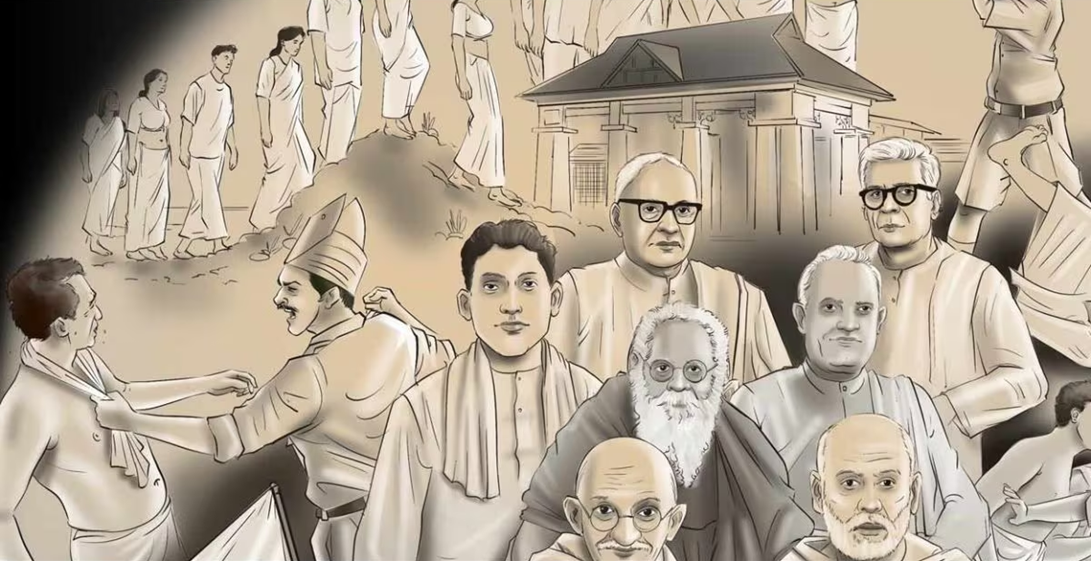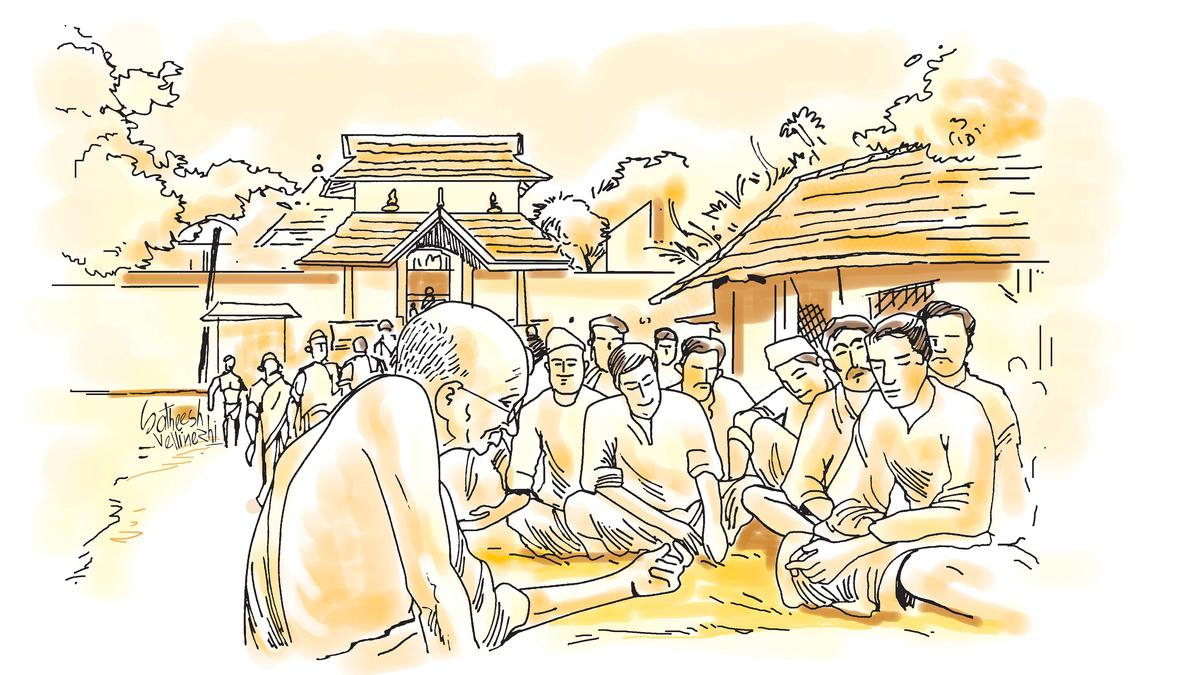- Courses
- GS Full Course 1 Year
- GS Full Course 2 Year
- GS Full Course 3 Year
- GS Full Course Till Selection
- Answer Alpha: Mains 2025 Mentorship
- MEP (Mains Enrichment Programme) Data, Facts
- Essay Target – 150+ Marks
- Online Program
- GS Recorded Course
- Polity
- Geography
- Economy
- Ancient, Medieval and Art & Culture AMAC
- Modern India, Post Independence & World History
- Environment
- Governance
- Science & Technology
- International Relations and Internal Security
- Disaster Management
- Ethics
- NCERT Current Affairs
- Indian Society and Social Issue
- NCERT- Science and Technology
- NCERT - Geography
- NCERT - Ancient History
- NCERT- World History
- NCERT Modern History
- CSAT
- 5 LAYERED ARJUNA Mentorship
- Public Administration Optional
- ABOUT US
- OUR TOPPERS
- TEST SERIES
- FREE STUDY MATERIAL
- VIDEOS
- CONTACT US
REMEMBERING VAIKOM SATYAGRAHA, A 100 YEARS LATER
REMEMBERING VAIKOM SATYAGRAHA, A 100 YEARS LATER
01-04-2024
On March 30, 1924, a non-violent movement began in Vaikom, a temple town in the princely state of Travancore – the first of the temple entry movements, which soon spread throughout the country. Amidst the growing nationalist movement, Satyagraha advanced social reform in the state of Travancore by promoting Gandhian methods of protest.

What is Vaikom Satyagraha?
-
Background:
- The princely state of Travancore had a system of feudal, militaristic government, with some of the most rigid and cruel social norms and customs seen in Travancore.
- Lower castes like Ezhava and Pulaya were considered polluting and many rules were in place to keep them away from the higher castes.
- These included restrictions not only on entry into the temple, but also on walking on the roads surrounding the temples.
- The princely state of Travancore had a system of feudal, militaristic government, with some of the most rigid and cruel social norms and customs seen in Travancore.
-
Contribution of Leaders:
- Madhavan presented this issue as a resolution at the Kakinada meeting of the All-India Congress Committee in 1923.
- Subsequently, it was taken up by the Congress Untouchability Committee formed by the Kerala Pradesh Congress Committee in January 1924.
- Madhavan, K.P. Keshav Menon, the then secretary of the Kerala Pradesh Congress Committee and Congress leader and educationist K. Kelappan (also known as Kerala Gandhi) is considered the founder of the Vaikom Satyagraha movement.
-
Factors Leading to Satyagraha:
- Christian missionaries supported by the East India Company had expanded their reach and many lower castes had converted to Christianity to escape from the oppressive system that kept them in bondage.
- Maharaja Ayilyam Thirunal, took many progressive reforms.
- Most important of these was the introduction of a modern education system with free primary education for all – even lower castes.
-
Beginning of Satyagraha:

- On March 30, 1924, Satyagrahis marched through restricted public roads. They were stopped 50 yards away from the spot where a board had been put up (around Vaikom Mahadev Temple) warning oppressed communities not to walk on the roads.
- Dressed in khadi and wearing khadi caps, Govinda Panikkar (Nair), Bahulayan (Ezhava) and Kunjappu (Pulaya) violated the prohibitory order.
- The police stopped them. All three people sat on the road in protest and were arrested.
- Then, every day, three volunteers from three different communities were sent to walk the forbidden streets. Within a week all the leaders of the movement were arrested.
-
Role of Women:
- Periyar's wife Nagammai and sister Kannammal played an unprecedented role in the war.
-
Arrival of Gandhi:
- Gandhi reached Vaikom in March 1925, held several discussions with leaders of different caste groups and met the Queen Regent at her Varkala camp.
- Gandhi and W.H. The Vaikom Satyagraha was officially called off on November 30, 1925, after consultations between Pitt (Commissioner of Police of Travancore).
- An agreement was reached after all the prisoners were released and access to the roads was allowed.
-
Temple Entry Proclamation:
- In 1936, the historic Temple Entry Proclamation was signed by the Maharaja of Travancore, which lifted the centuries-old ban on entry into temples.
-
Significance:
- Amid growing nationalist sentiment and movements across the country, it pursued social reform.
- For the first time, it brought Gandhian methods of non-violent protest to Travancore.
- That this movement continued without any interruption for more than 600 days despite social pressure, police action and even a natural disaster in 1924 is commendable.
Conclusion:
Until 1917 the Indian National Congress refused to carry out social reforms. But with the rise of Gandhi and increasing activism among lower caste communities and the untouchables, social reform soon made itself the heart and center of Congress and Gandhi's politics.



